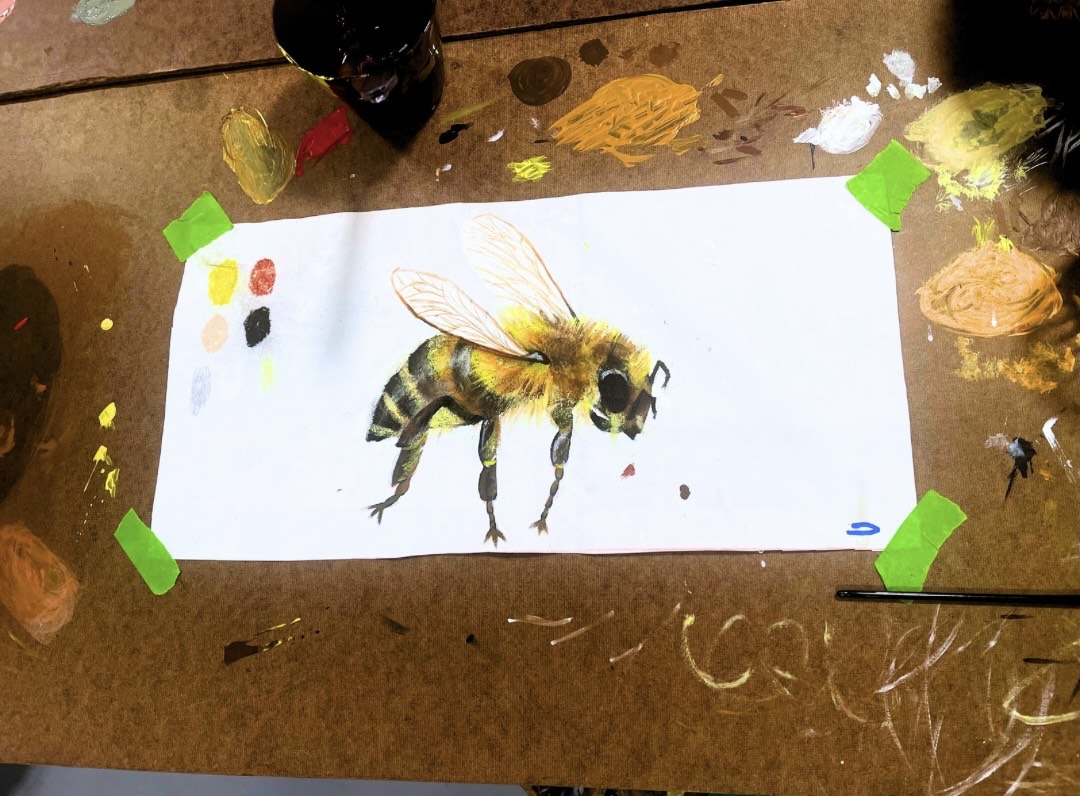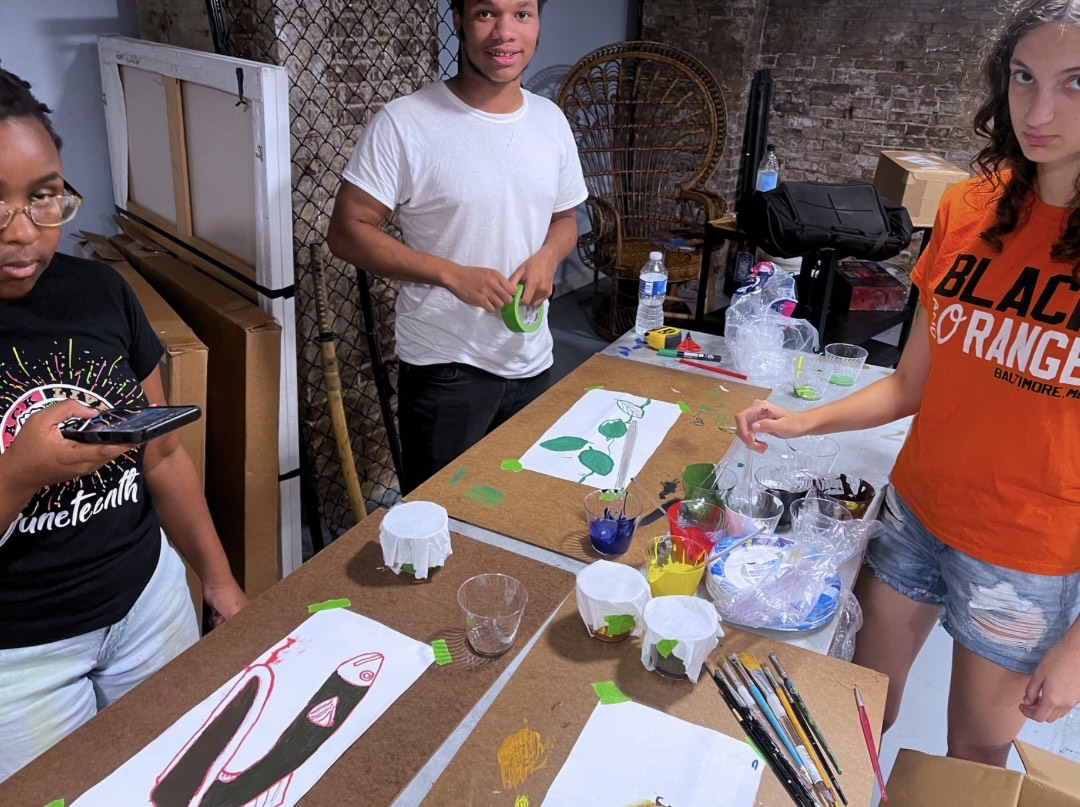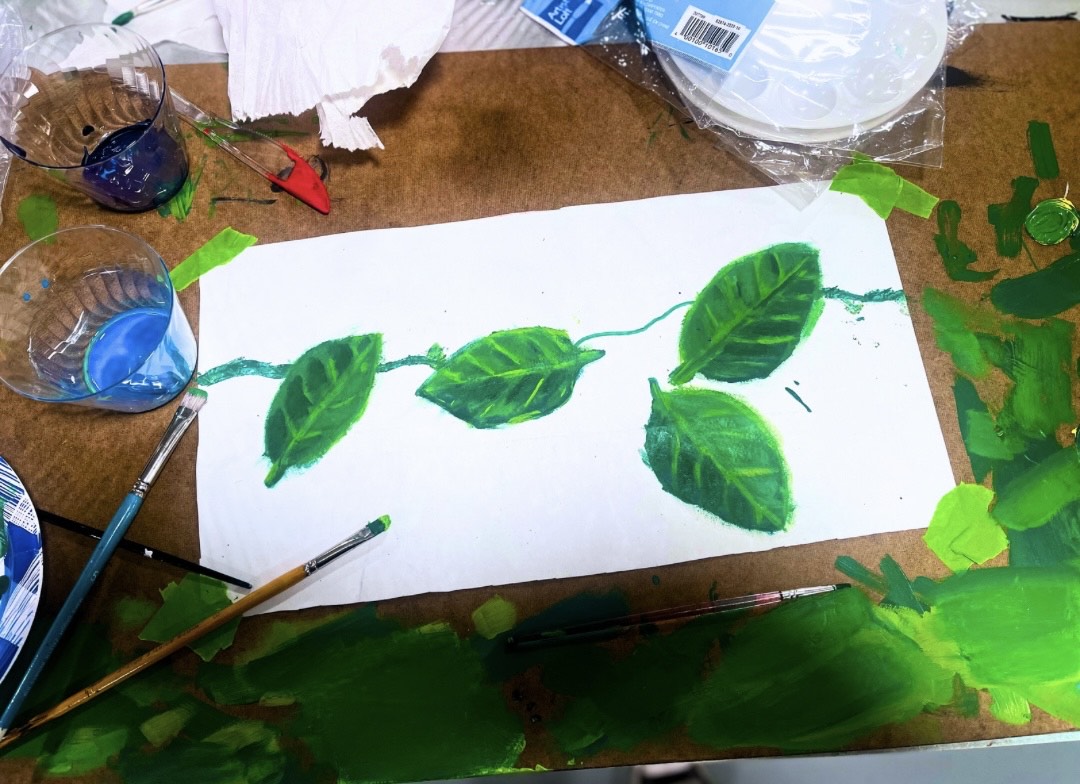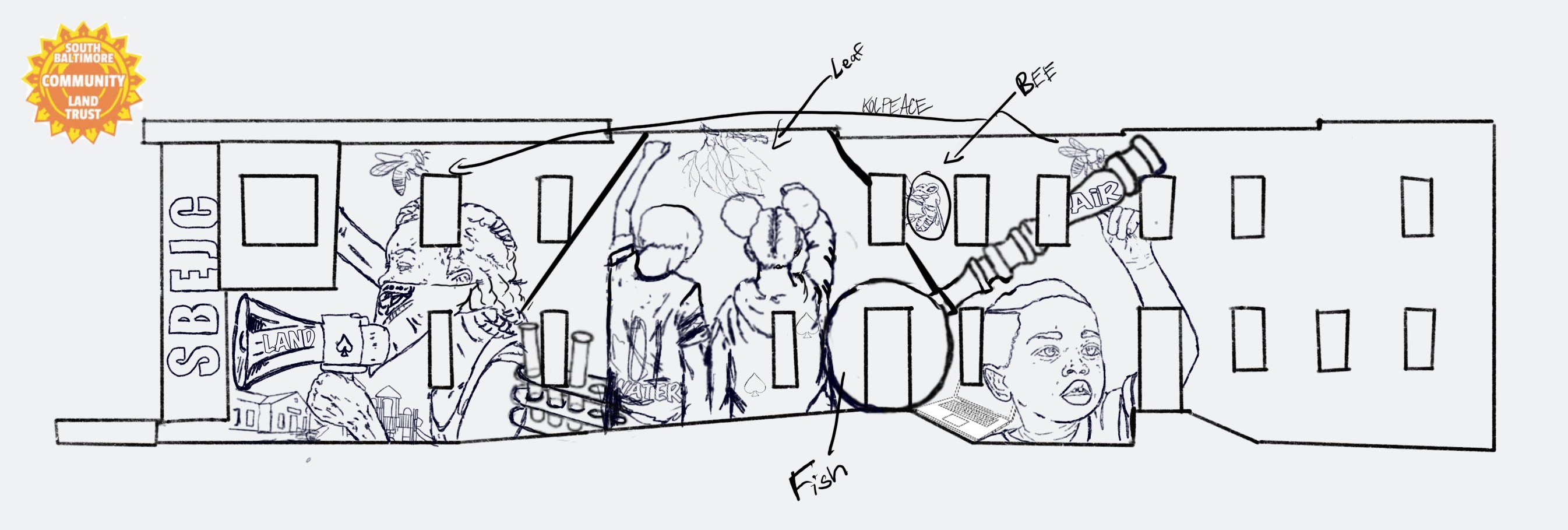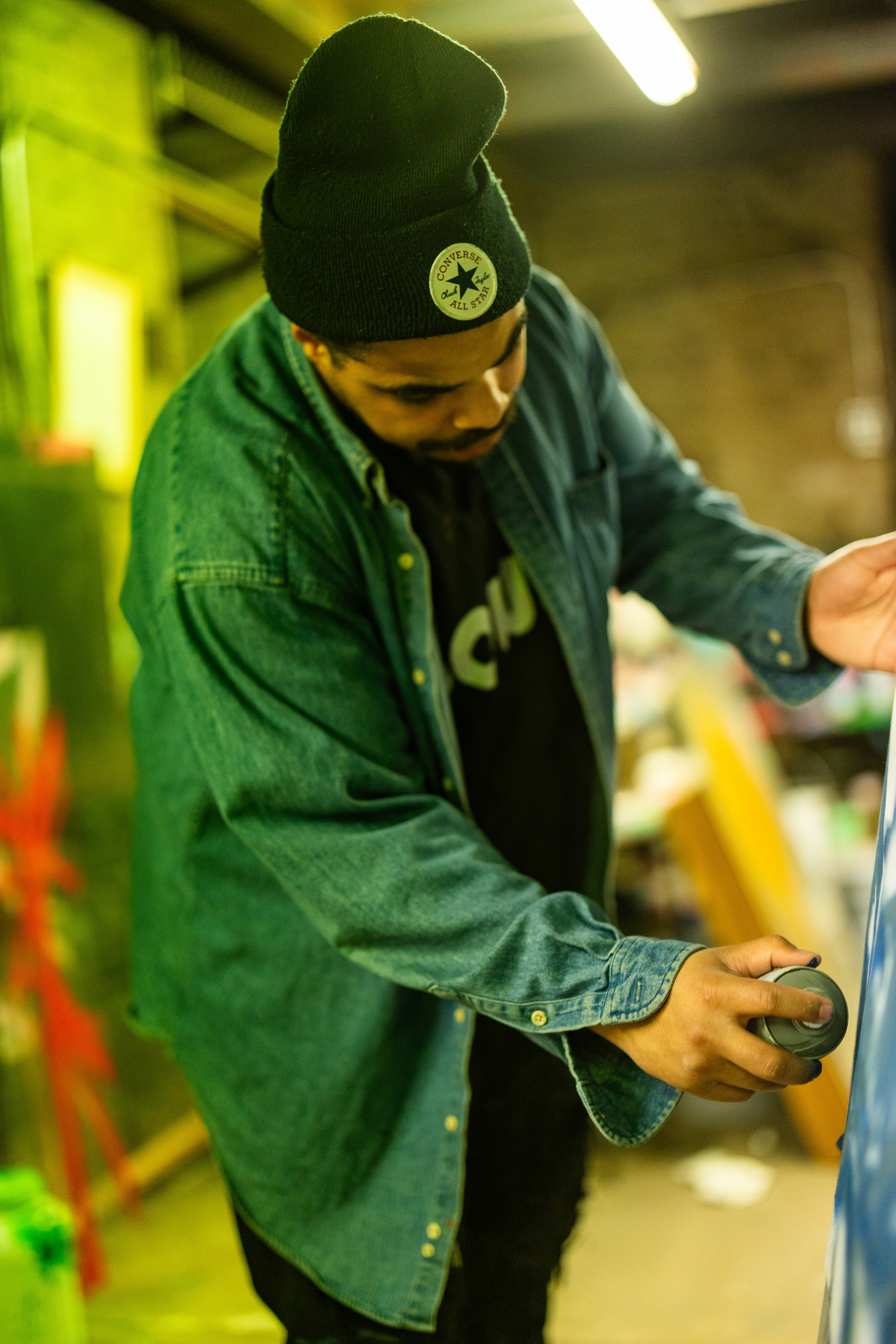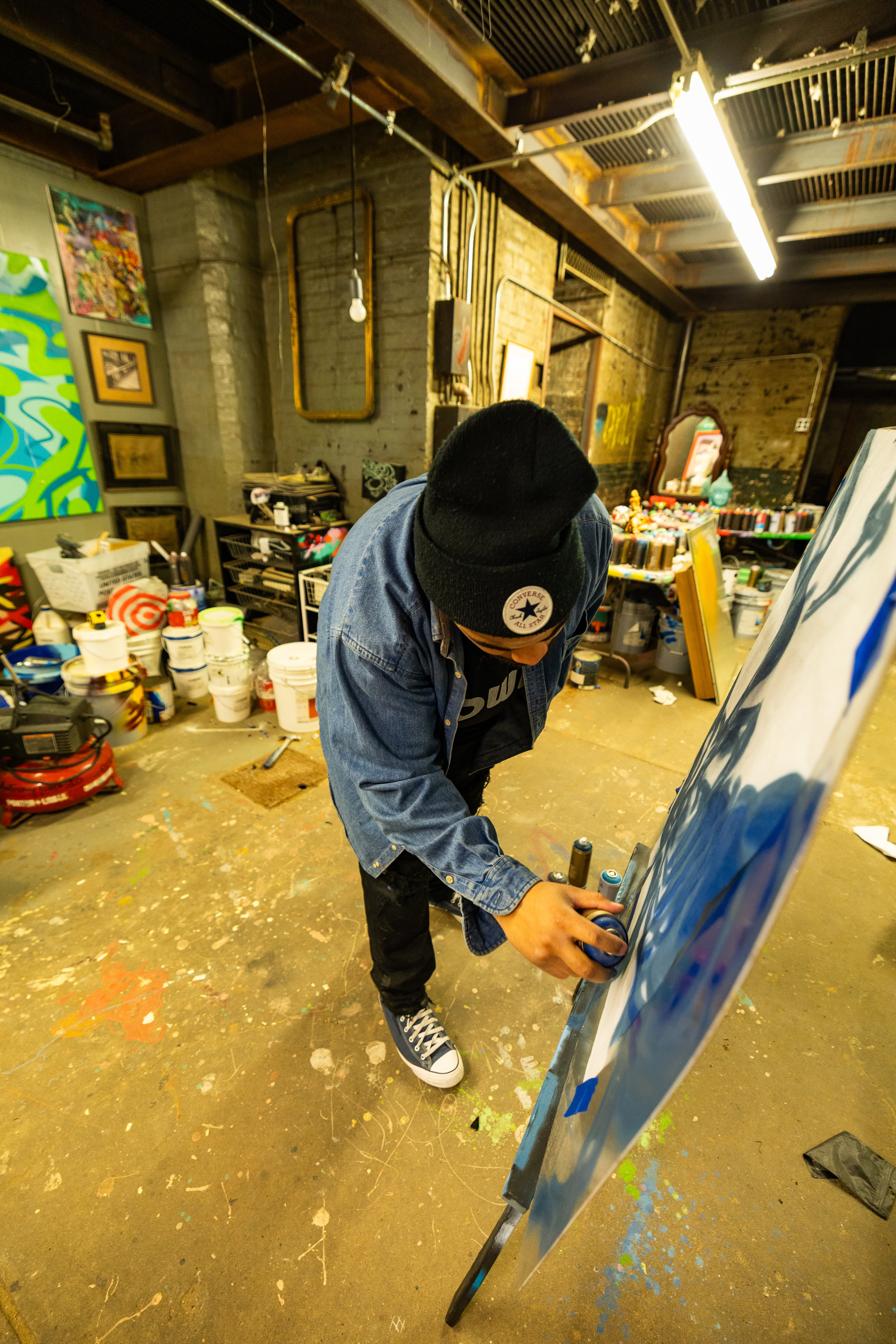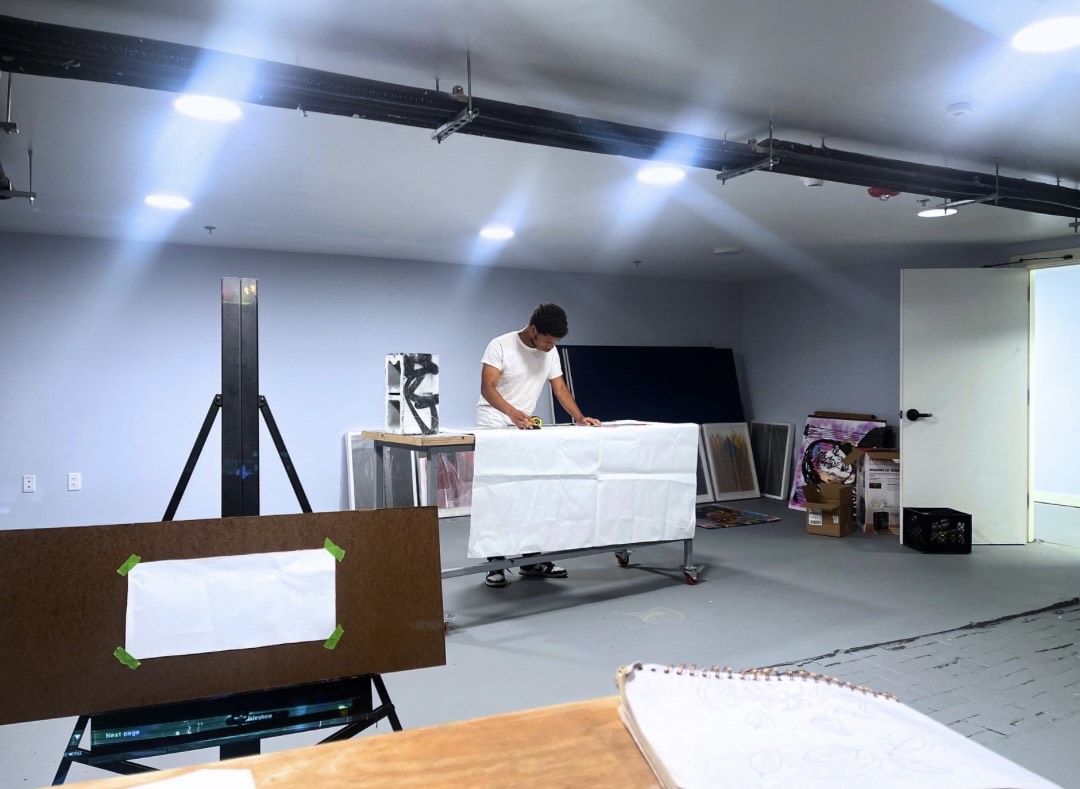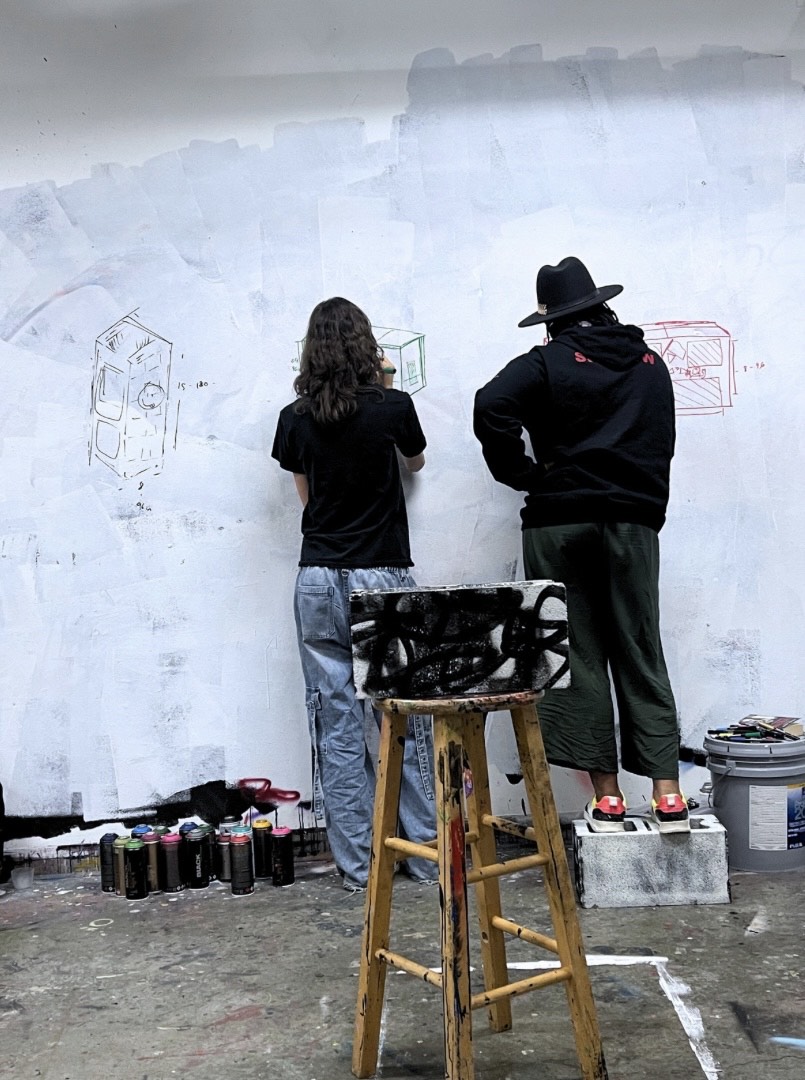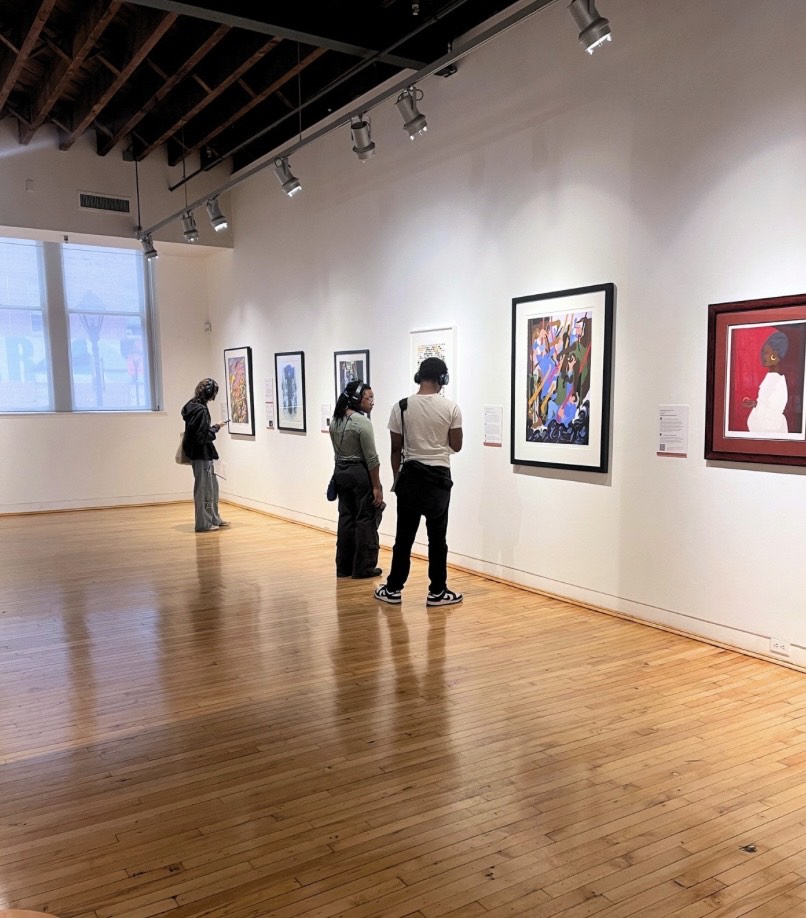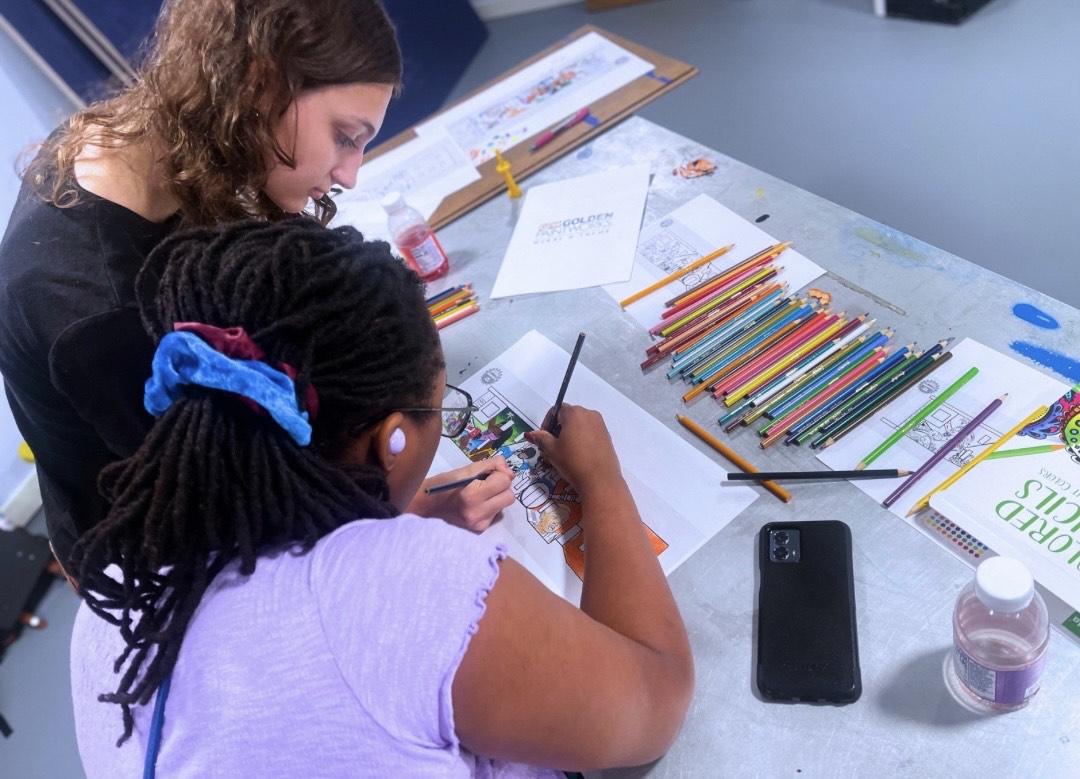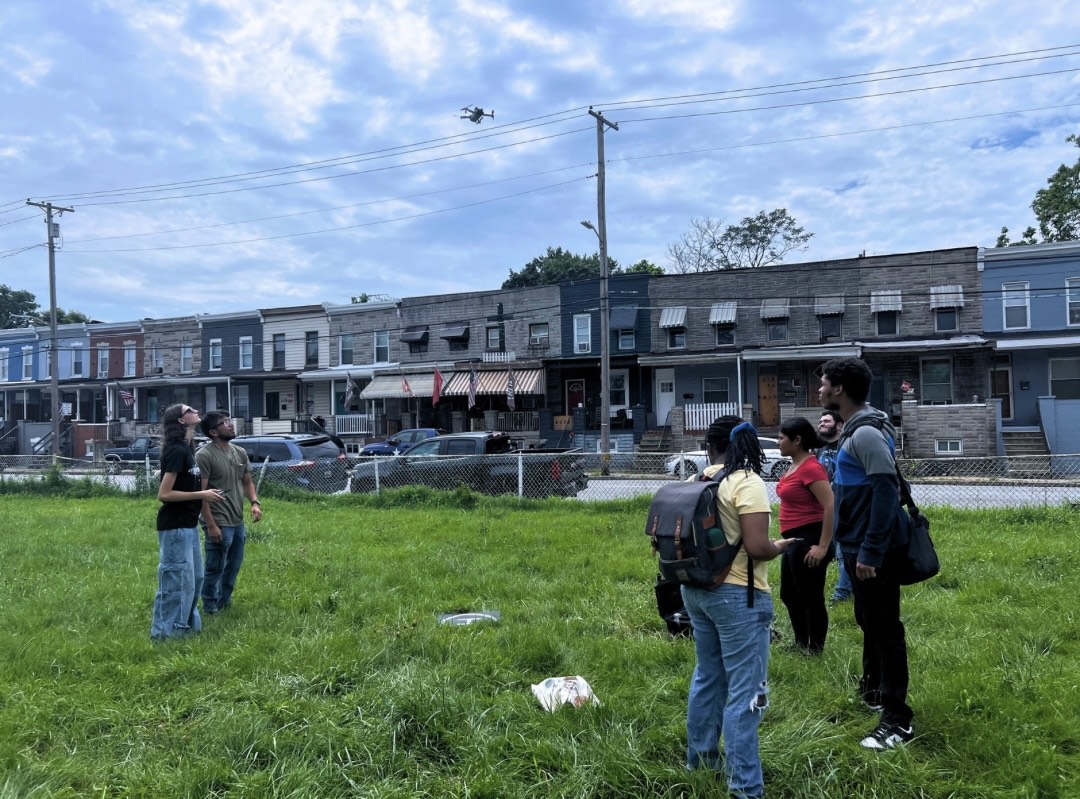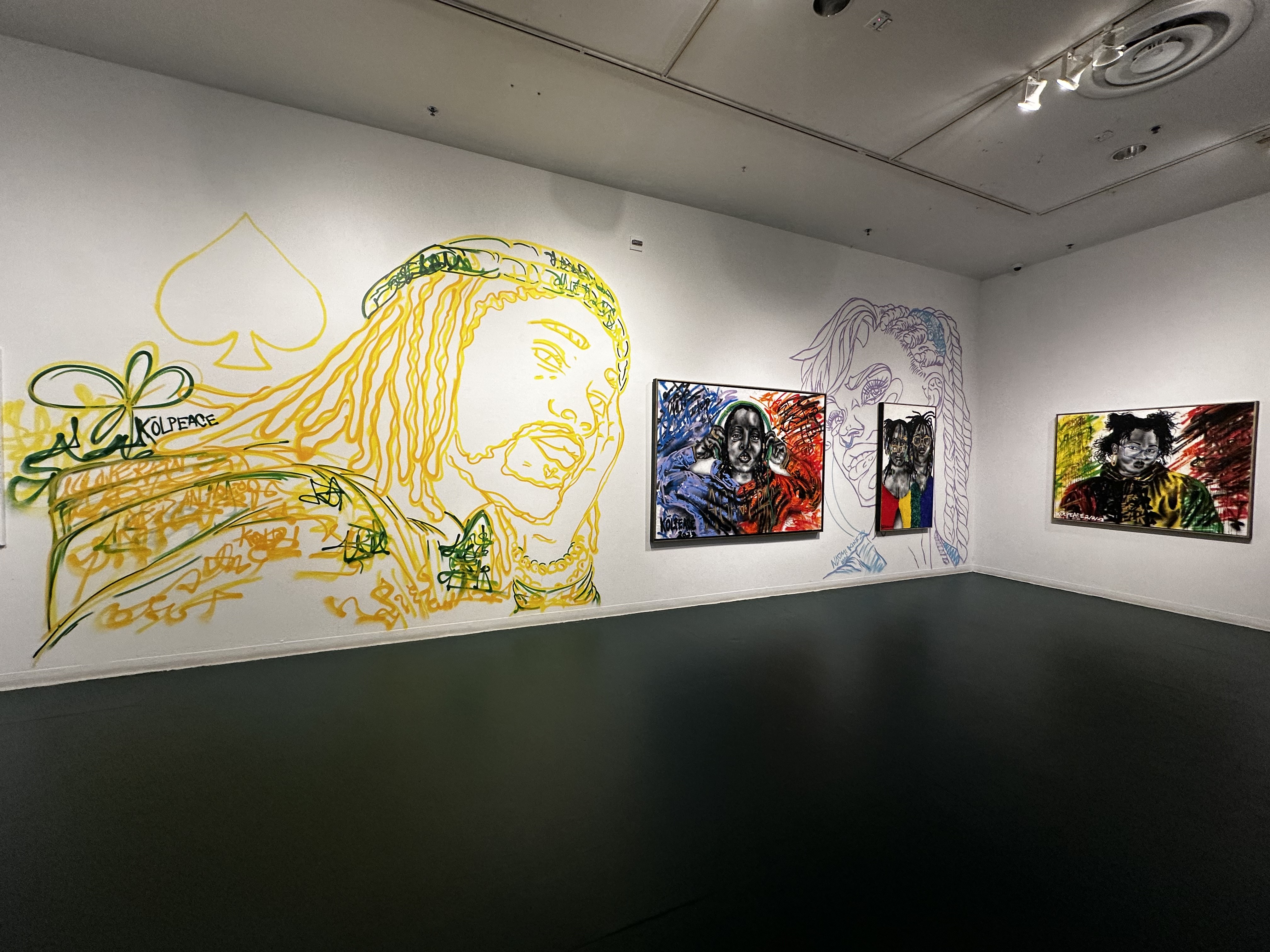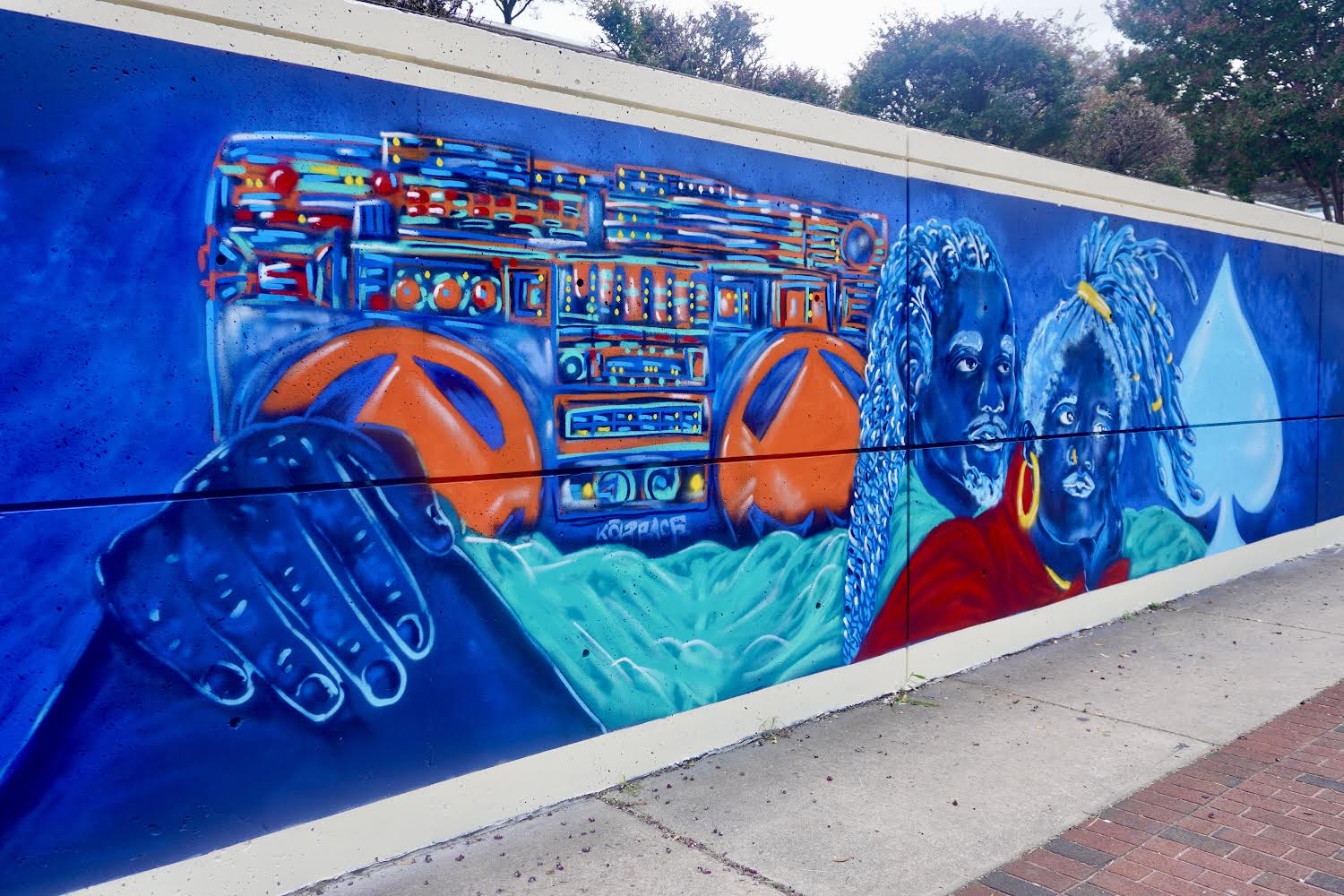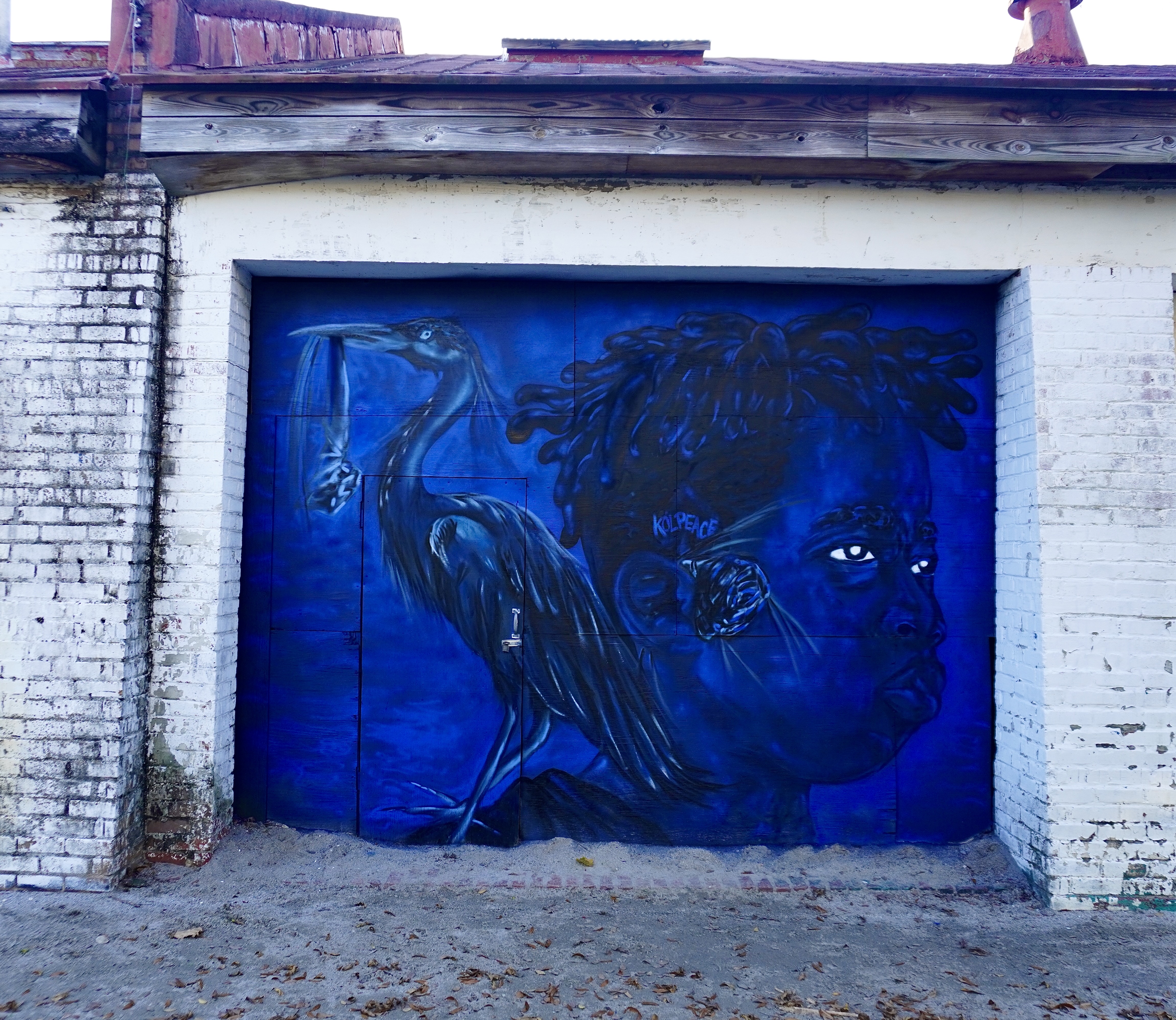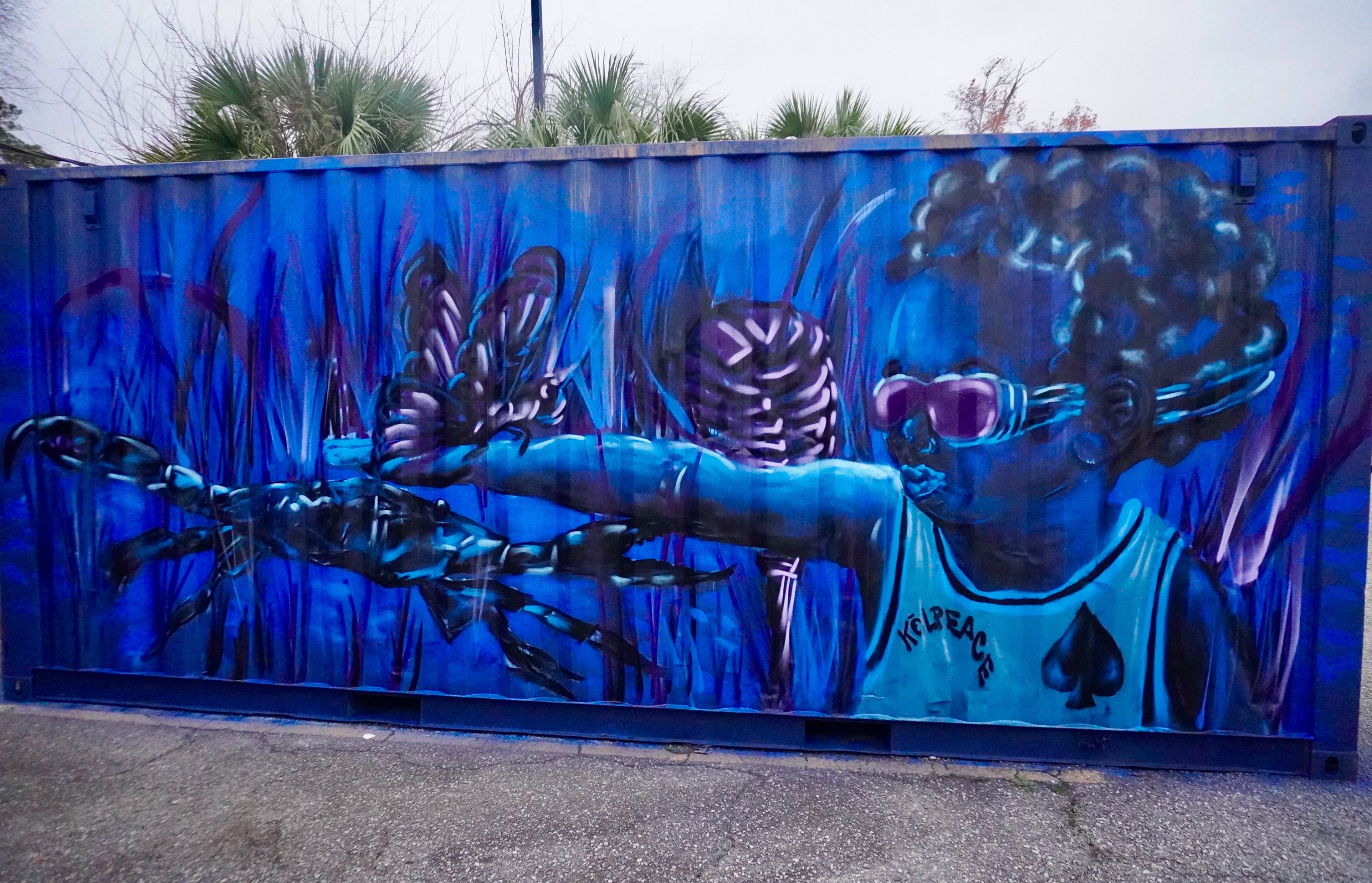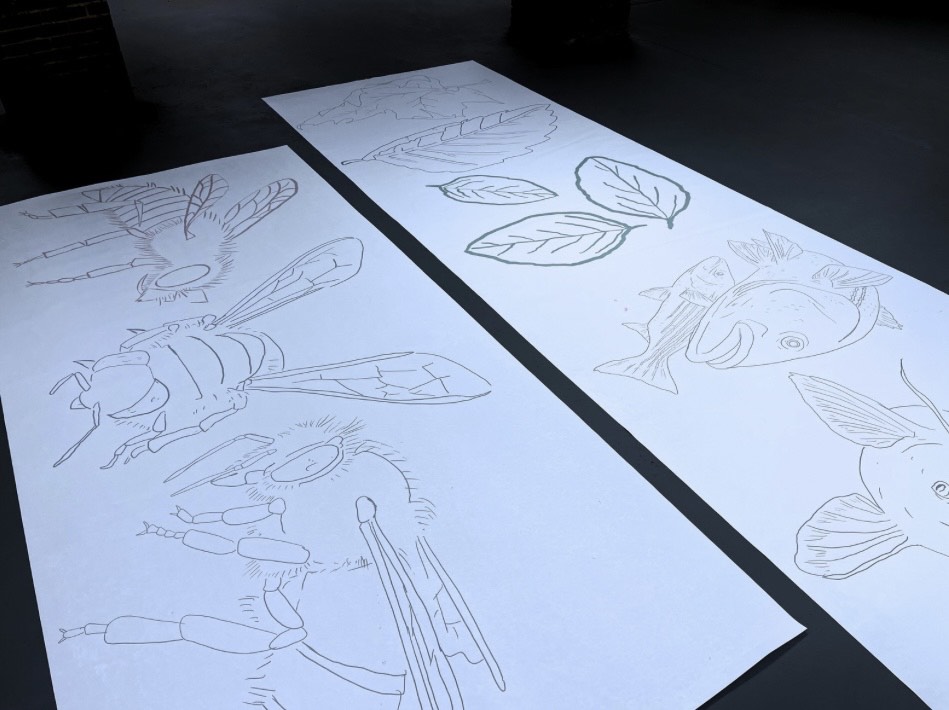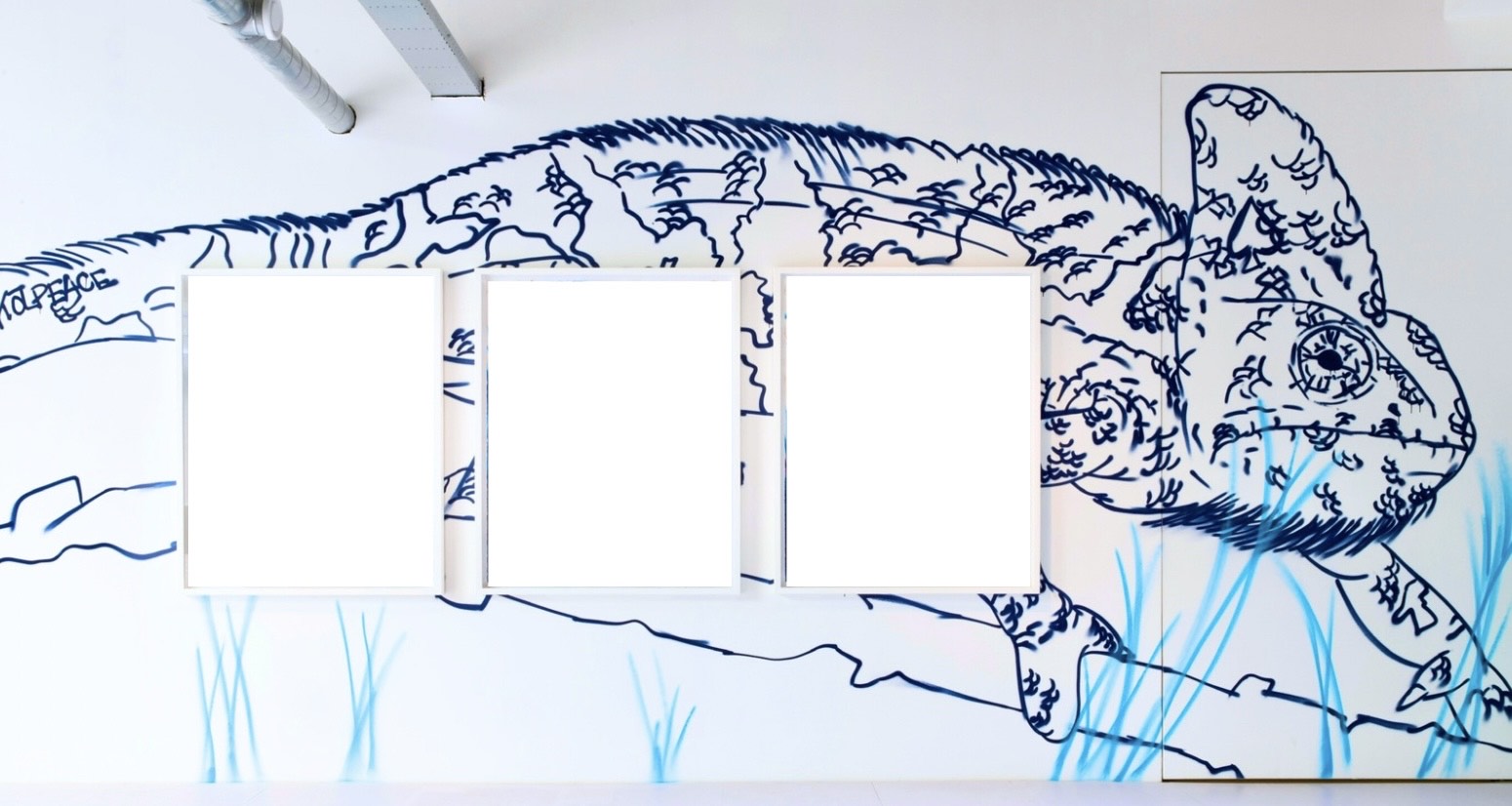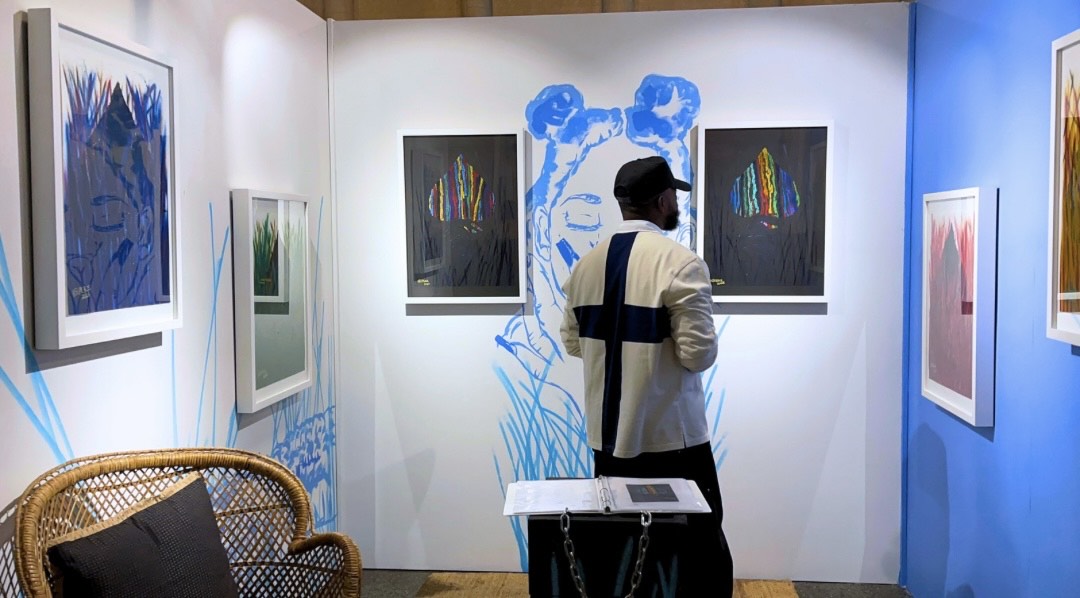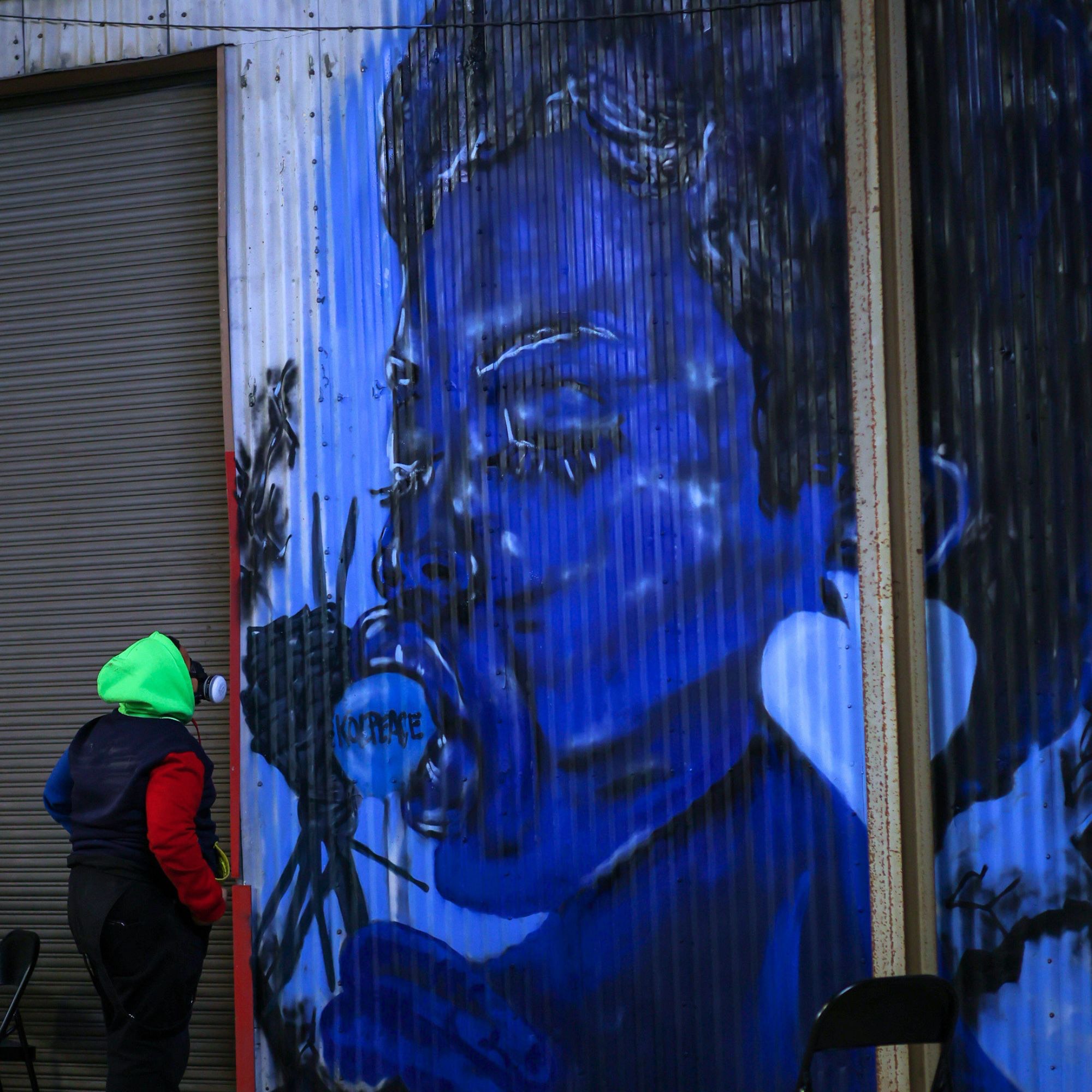Artist Spotlight: kolpeace
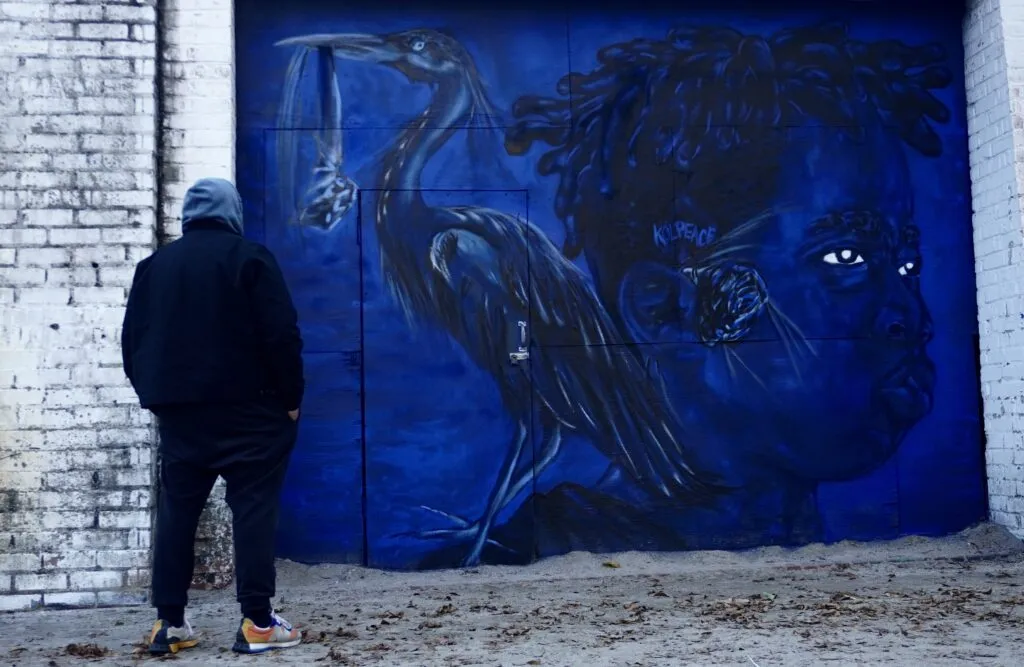
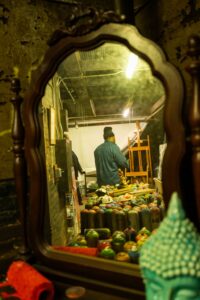
Christopher kolpeace Johnson, a Columbia, South Carolina-based artist, is known for his vibrant, expressive portraits & animals rooted in Black Southern heritage. With an MFA in Community Arts, he fuses traditional Southern themes with contemporary and graffiti influences, using art as a vehicle for empowerment, social justice, and cultural pride. His name, “Kids Only Love Peace,” reflects this mission.
Now serving as the Lead Artist for the South Baltimore Community Land Trust as part of the Strength Through Solidarity initiative led by the Mural Arts Institute, kolpeace continues to create work that uplifts and unites communities in South Baltimore. Deeply influenced by Black folklore and the sounds of trill, trap, and soul, his art challenges cultural bias and invites healing. Whether in the studio or performing live, he blends traditional and unconventional materials to tell stories of resilience and love, offering both reflection and connection through every piece.
Tell us a bit about yourself and your art practice:
Salute, I’m kolpeace, a South Carolina low country artist focusing on black southern heritage in humanity. Through the visual arts, I specialize in contemporary, public, performance, and community art to display “culture for service & service for humanity”. Growing up in Columbia, SC, there was not much invitation for creative forwardness, and I had something to say. Emerging from the chaotic and fractured times we live in, my artistic journey serves as a heartfelt tribute to my Southern heritage, deeply intertwined with the landscapes and legacies of the region. Each piece of my work is infused with rich shades of blue—haint, Carolina, and indigo—each color holding a profound significance and reflecting the spirit of the ancestors and wildlife that inhabit the South.
This vibrant palette not only grounds me in my roots but also offers a portal to the evocative memories and narratives of my upbringing, regardless of where I may create across the globe. I’ve come to understand that it is essential to honor my origins, especially as the tides of history ebb and flow, potentially leaving me far removed from my birthplace.
Through my art, I strive to capture these fleeting moments and connections, transforming them into a legacy that speaks to future generations. With each brushstroke, I weave a tapestry that honors the past while engaging in a dialogue about the environmental and social landscapes we navigate. Ultimately, my work becomes a beacon of continuity, a bridge between my historical context and the future, challenging viewers to reflect on their own connections to place and identity.
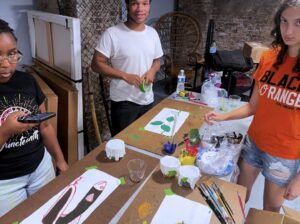 What is happening with the Strength through Solidarity Initiative at South Baltimore Community Land Trust (SBCLT)?
What is happening with the Strength through Solidarity Initiative at South Baltimore Community Land Trust (SBCLT)?
South Baltimore Community Land Trust (SBCLT) is an organization in South Baltimore that facilitates community-led planning to address our immediate and long-term needs. Building partnerships to preserve and improve housing for permanent affordability, and develop unused spaces to meet shared needs. As their lead artist creating a mural on the newly developed South Baltimore Environmental Justice Center (SBEJC) that serves as a community hub for the housing and environmental justice work in South Baltimore. During my residency, I’ve been asked to create a community mural that displays the environmental justice protest, research and discovery by the organization and people of South Baltimore in Curtis Bay who endure hardship with the coal mines, water supply, and air pollution. This presented a rare opportunity to involve the next generation in helping to lead the vision. We have recruited three local Baltimore teens: Kelis Adams (17), Taiyone Simms (18), and Joise Ritchie (17), to help champion this mural and add their voices. During an eight-week summer training mural artist development program, they have learned to prepare/develop, paint, and install the poly-tab mural method. During our time, we have visited local artist spaces, including galleries, museums, and mural sites, and fellowshipped with the people living in South Baltimore. The idea was to bridge the gap for these Youth artists to experience and lead in their passion, and I was blessed enough to have SBCLT help bring my vision to life, and vice versa. We have begun the indoor preparation stages and are preparing to install the mural in summer 2025.
Are there any challenges or successes you would like to share with us?
Exploring the intricacies of environmental justice in South Baltimore and translating this understanding into a mural that embodies the concept of development without displacement was an enriching and thought-provoking journey. At the heart of my artistic endeavor lies a deep commitment to humanity, a dedication to cultural service, and an appreciation for the integration of wildlife into the narrative of our community.
To ensure that our vision truly reflected the environmental needs of the area, I actively sought both virtual and in-person feedback. One of the significant challenges we faced was gathering community input outside the confines of formal organizational settings. To address this, we adapted our strategy by transitioning open meetings to a virtual format, which significantly broadened participation. This shift not only made it easier for individuals to voice their thoughts but also helped to illuminate the concept of community engagement, especially as it pertains to our planned community paint days.
This initiative was particularly meaningful for the youth artists involved, as they took on leadership roles in facilitating these sessions over the summer. It was essential to equip them with the tools and experiences necessary to navigate real-world mural projects, whether in the bustling streets or the creative environment of the studio. This training was intentionally hands-on, allowing them to engage in collaborative learning that encouraged critical thinking and independence. They learned to recognize the diverse talents of their peers, fostering a spirit of collaboration that enriched their artistic practices.
The success of this approach did more than prepare them for the mural project itself; it laid the groundwork for their future artistic pursuits. It instilled in them the importance of building healthy relationships, nurturing trust, and working together on a monumental project that holds significance for the entire community. Engaging with their local environment in this way not only strengthens their artistic capabilities but also deepens their connection to the themes of environmental justice and cultural identity that the mural aims to convey.
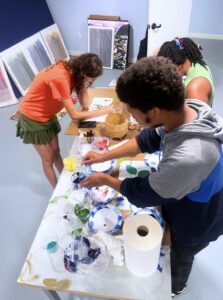 How does this project use art for education and social change?
How does this project use art for education and social change?
The mural, an artistic representation of progression and revitalization, will be unveiled at the South Baltimore Environmental Justice Center (SBEJC). This vibrant artwork will depict themes of biodiversity, community resilience, and social justice, symbolizing the interconnectedness of nature and community well-being. The SBEJC is envisioned as a hub for citizen science research, where local residents can engage in hands-on environmental studies to address pressing issues within their neighborhoods. It will serve as a gathering space for community organizations, fostering collaboration and dialogue among stakeholders dedicated to environmental stewardship and social equity. Additionally, the center will be a vital resource for Curtis Bay residents, providing support, information, and advocacy related to the myriad environmental burdens they face. Through this initiative, the mural will not only beautify the space but also inspire hope and action within the community.
Are there any community engagement activities that helped you shape the project?
From inception to completion, this project has meticulously prioritized community involvement and environmental sustainability at every stage. Engaging in a series of meetings and in-depth conversations allowed me to gain valuable insights into the intricate details of the building’s development and its envisioned impact on the community. This journey not only deepened my passion for the project but also strengthened my relationship with the dedicated organization behind it.
As we worked towards our ultimate goal, we collaboratively produced a vibrant mural that embodies the very essence of our mission. This artwork serves as a powerful expression of our shared values and aspirations, reflecting the diverse voices within the community. The level of vulnerability exhibited throughout this project has underscored the profound need for both the community center and the mural itself, both of which promise to serve as beacons of hope and resilience for the South Baltimore community. Being part of this transformative initiative has broadened my understanding of what it means to confront social injustices directly and meaningfully.
Final comments about how working on this project has impacted your art practice:
In the evocative words of Outkast, “I’m crumblin, no time for fumbling.” This sentiment encapsulates the essence of my artistic journey, marked by both personal growth and the inevitable missteps along the way. As I embarked on my adventure into public art, I envisioned murals that did more than just beautify; I wanted them to be deeply rooted in the stories they tell and the communities they inhabit.
Murals can be strikingly colorful and exquisitely crafted, yet my aspiration was always to create works that have a monumental impact—art that nurtures both the environment and its people. Telling untold stories, illuminating hidden figures, and embracing that gritty Southern spirit are paramount to my vision. A mentor once advised me to infuse a piece of myself into every work I create, and that wisdom resonates with me as I reflect on my largest mural to date.
I anticipated that this project would be rife with challenges and unforeseen realities. With the unwavering support of my community and the trust bestowed upon me by this organization, I was determined to pour my heart and soul into this mural, meeting the needs of both the art and the people it represents.
Midway through this journey, I faced a profound personal loss: my grandmother passed away. The weight of her absence lingers heavily, as she was a true Southern belle, someone who moved through life with grace and an unwavering joy. At every family gathering, she danced without hesitation, radiating an infectious spirit and commanding respect simply through her presence. From her, I inherited a fiery determination to navigate life without fear and to uplift those who are struggling.
That fire is also evident in the courageous individuals who stand up for a better future rather than fleeing from challenges. The community of Curtis Bay deserves that same passion and intention, and I am proud to ignite their hopes as we collectively envision a brighter tomorrow. As an outcast—someone who exists outside the norms of conventional society—I am committed to speaking with depth and purpose about this project, which aims to protect and inform the residents of South Baltimore. It’s about building nurturing spaces and genuinely caring for one another, because, at the end of the day, all we truly have is each other.
